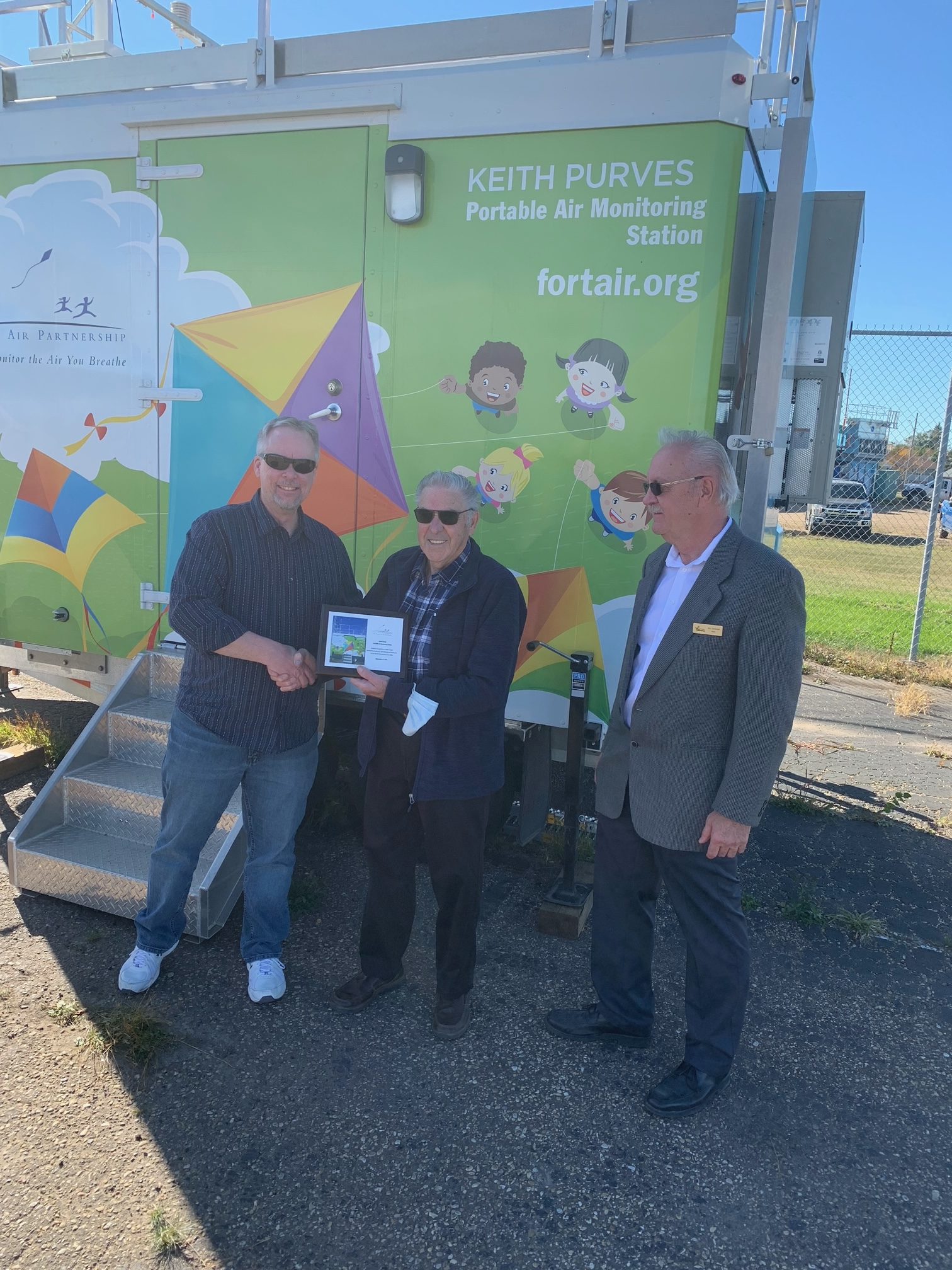In a ceremony held in Lamont on September 22, Fort Air Partnership’s (FAP) portable continuous air monitoring station was named after Keith Purves, a Fort Saskatchewan resident who has been on the organization’s Board of Directors as a public member since its inception.
“Keith has shown tremendous dedication to FAP and the community through his volunteer work. He oversaw the transformation of FAP into a credible, transparent and trusted source of ambient air quality data. Given Keith’s long-time dedication it is befitting that our first named trailer be named in honour of him,” explained FAP Chairman Allan Wesley.

Keith’s involvement with local air monitoring issues predates the formation of FAP as a non-profit society. Several years before FAP’s creation, Dow Chemical spearheaded the formation of a local citizens group, in response to community concerns about the impact on health of emissions coming from local heavy industries. Recently retired from his job with the criminal justice program at Native Counselling Services of Alberta, Keith responded to a newspaper ad seeking volunteers to join the group.
“I had no air monitoring experience at the time but I felt I did have the right background and certain skills that could help a volunteer group work effectively together,” he explained. Selected after an interview process, Keith joined a group made up of a cross-section of people from government, industry and the public – very similar to FAP’s current governance structure. Keith credits this diversity – and the volunteer nature of the group – as keys to FAP’s success over time.
“The diversity of the people in the group is what made it possible to create something new that could be supported. And there has been a lot of volunteer involvement over the years; people donating their time and effort and resources to build confidence in the community and with industry that we in fact could do the job of managing an air monitoring program,” he noted.
While FAP is considered a stable, well-managed organization today, it came from humble beginnings. Keith recalls holding meetings in various members’ homes. Conversation largely centred on how to monitor and report on air quality in a way where the public could be involved. Becoming chair of the group in 2000, he led a process which pursued that aim in a formal way. Fort Air Partnership was formed as a society in 2002.
“Having the word partnership in the name was important to us because that’s what gave the group its strength,” he recalled. Over time, the organization managed to put the necessary policies and systems in place that resulted in Alberta Environment turning over its Fort Saskatchewan air monitoring station to FAP. Later, FAP also took responsibility for industry air monitoring stations already established in Alberta’s Industrial Heartland.
“I think it was difficult for industry to turn over their assets, step back and not interfere. But government wanted to try something new and over time we were able to build up trust with the community and our funders. They really listened to what we had to say and believed we could do it,” explained Keith. He credits Laurie Danielson, Executive Director of the Northeast Capital Industrial Association, as being instrumental in effectively communicating FAP’s intentions and capabilities to local industry.
Keith, currently Vice-chair of the Board of Directors, has been part of the executive team for most of his years with FAP. For him, a maxim has been to “stop and review and make sure we are on-track with the public regarding what’s needed. I think each year we’ve been able to get a little bit better, arriving at decisions together by consensus…that’s been a key factor in FAP’s success.”
“Keith has an amazing ability to take into consideration many points of view and then use that information to enable a group to collectively work towards an end result that everyone supports. He has inspired me and many others to take a step back and look at the bigger picture, which has led to FAP becoming the well respected Airshed organization that it is today,” said Nadine Blaney, FAP’s Executive Director.

